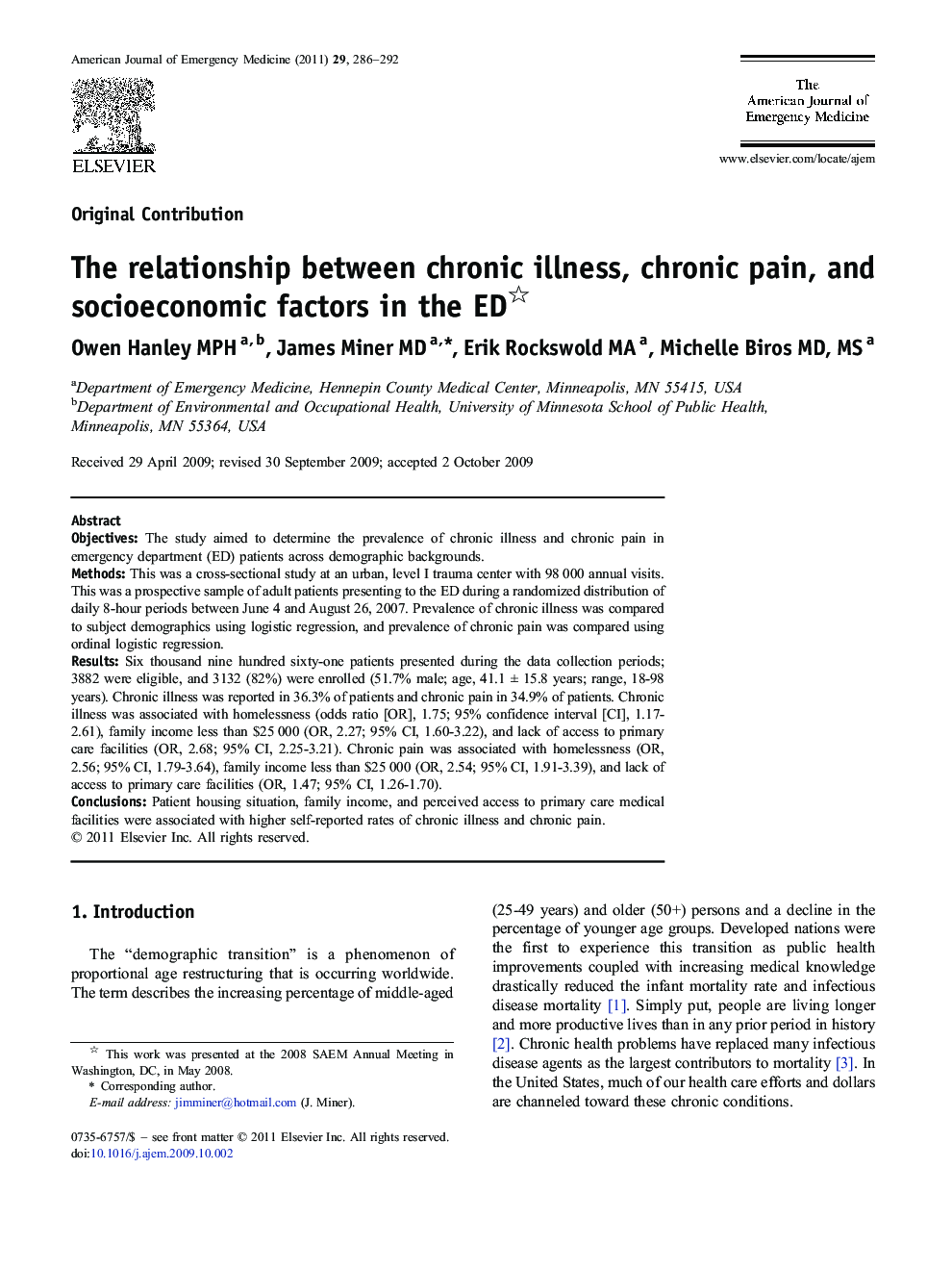| کد مقاله | کد نشریه | سال انتشار | مقاله انگلیسی | نسخه تمام متن |
|---|---|---|---|---|
| 3226503 | 1588150 | 2011 | 7 صفحه PDF | دانلود رایگان |

ObjectivesThe study aimed to determine the prevalence of chronic illness and chronic pain in emergency department (ED) patients across demographic backgrounds.MethodsThis was a cross-sectional study at an urban, level I trauma center with 98 000 annual visits. This was a prospective sample of adult patients presenting to the ED during a randomized distribution of daily 8-hour periods between June 4 and August 26, 2007. Prevalence of chronic illness was compared to subject demographics using logistic regression, and prevalence of chronic pain was compared using ordinal logistic regression.ResultsSix thousand nine hundred sixty-one patients presented during the data collection periods; 3882 were eligible, and 3132 (82%) were enrolled (51.7% male; age, 41.1 ± 15.8 years; range, 18-98 years). Chronic illness was reported in 36.3% of patients and chronic pain in 34.9% of patients. Chronic illness was associated with homelessness (odds ratio [OR], 1.75; 95% confidence interval [CI], 1.17-2.61), family income less than $25 000 (OR, 2.27; 95% CI, 1.60-3.22), and lack of access to primary care facilities (OR, 2.68; 95% CI, 2.25-3.21). Chronic pain was associated with homelessness (OR, 2.56; 95% CI, 1.79-3.64), family income less than $25 000 (OR, 2.54; 95% CI, 1.91-3.39), and lack of access to primary care facilities (OR, 1.47; 95% CI, 1.26-1.70).ConclusionsPatient housing situation, family income, and perceived access to primary care medical facilities were associated with higher self-reported rates of chronic illness and chronic pain.
Journal: The American Journal of Emergency Medicine - Volume 29, Issue 3, March 2011, Pages 286–292